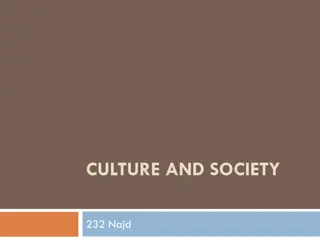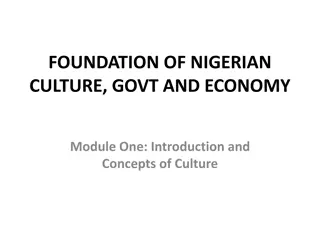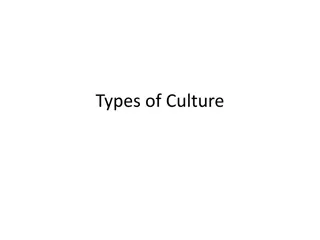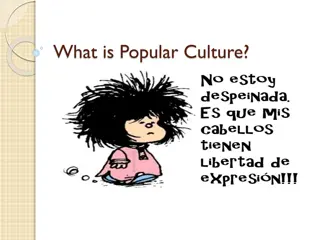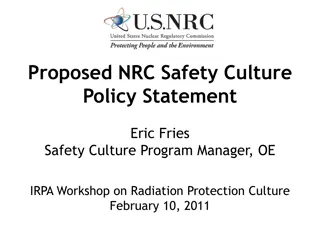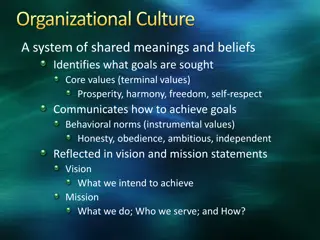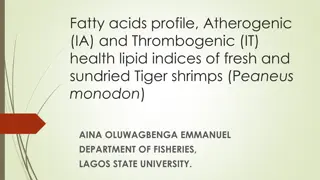Overview of Penaeus Monodon Grow-Out Culture
This informative content provides a detailed insight into the grow-out culture of Penaeus monodon, covering topics such as scientific classification, production techniques, prawn physiology, geographical locations, pond preparation, water and soil management, prawn feed, harvest practices, diseases, and control measures. It also discusses the classification overview, production cycle, and various measures for extensive, semi-intensive, and intensive farming. Moreover, it delves into the stages of wild broodstock, maturation, hatchery, larval rearing, and adult prawn harvest.
Download Presentation

Please find below an Image/Link to download the presentation.
The content on the website is provided AS IS for your information and personal use only. It may not be sold, licensed, or shared on other websites without obtaining consent from the author. Download presentation by click this link. If you encounter any issues during the download, it is possible that the publisher has removed the file from their server.
E N D
Presentation Transcript
Grow-out culture of Penaeus monodon Mr. Bhartendu Vimal Guest Faculty-Asst. Prof. CoF, Kishanganj, BASU, Patna
Outline Scientific Classification Overview of the Grow-out Techniques Production Cycle Prawn Physiology Geographical Location Pond Preparation for Soil and Water Soil and Water Management Prawn Feed Prawn Harvest Diseases and Control Measures
Kingdom Animalia Phylum Arthropoda Subphylum Crustacea Class Malacostraca Order Decapoda Suborder Dendrobranchiata Family Penaeidae Genus Penaeus Species P.monodon Binomial Name Penaeusmonodon Fabricius, 1798
Extensive Semi- intensive Intensive Measures < 5 ha (tidalareas) Measures 1-5 ha Measures 0.1- 1.0 ha (non- tidalareas) Wild seed stocked at density at2/m2 Density 5-20PL/m2 Density at20-60PL/m2 Natural food and enhancedwith chem.fertilizers Water exchange by tide & bypumping Feed enhanced w/ fertilization, artificial feeds is common Completely drained &dried, heavy aeration, artificial feed w/ feed tray check, reduce water exchange tolower risks of viruses >50g, harvested w/in 6mo. ormore Yields 500-4000kg/ha/yr Feed & phytoplanktonbloom monitored &managed Yield at50-500kg/ha/yr Water parameters regularlychecked, efficient feedmgt. Yield of 4,000- 15,000 kg/ha/yr
Wild broodstock Maturation tank (1-3 mo.) (eyestalk ablation) Re-maturation spawning eggs (external fertilization) Spawning Nauplii Nauplii (2days) Hatchery (12-18hrs) Protozoea (4.5days) Larval Rearing tank (26-31days) Mysis (4 days) Postlarvae Postlarvae (15-20days) Extensive Intensive Semi-intensive Wild seed Adult Adult Harvest Adult
A. Embryo -start from fertilization period through (2,4,8,16,32 celled) morula,blastula, and gastrula up to hatching. FertilizedEggs
B. Larva - planktonic in behavior occurring offshore.At this stage the 6th abdominal segment is relatively longer than the carapace length. Second stage Larvae- Zoea Newly hatched larvae- Nauplius
3rdStage _ Mysis 4th Stage _ Postlarvae 1 and old larvae
D. Adolescent C. Juvenile transparent with dark brown streak; body proportion same as adult; postlarva or fry in earlier stage; sexes can be identified; fingerling in later stage; start crawling using pereiopods; males possessing a jointed petasma; swimming using pleopods; start inhabit the brackish area, nursery ground. females possessing adult- like thelycum.
F.Adult E. Sub- adult begin at the onset of sexual maturity, completion of sexual maturity; male possess spermatozoa in paired terminal ampoules; male possessing spermatozoa in the terminal ampules female start to spawn; female possess spermatozoa in thelycum second and more copulations occur. spermatozoa by copulation
Life cycle 1.Spawner 2.Roe 3.Nauplius 4.Zoea 5.Mysis 6.Postlarva 7.Fry 8.Adult
SexDifferentiation Courtship and MatingBehavior Maturation Stages ofOvarian Embryo LarvalStage
Lateral view of Adult Penaeus monodon with their Technical Terminology
Prawn a-newly molted; majority blue and minority black color on shell white stripes across body segment. Prawn c- fourth day after the molting, shell is light green turn to very light blue color; light yellow color stripes on the body segment. Prawn d- in the maturedstage after molting, shell is hard and light green yellow color across the body. Prawn b -second day after molting process stage, minority black color of the soft shell
Soil Material things found in the area; houses, trees, and other things which cannot be moved. Soil quality kinds of soil e.g., sandy, clay, loam etc.; directly affect prawn culture. Soil gaseous also soil heat; hot gas that emits from earth surface; affect the water quality to change; temperature, color, growth of the microorganisms, and taste and smell in the water.
Clay loam very sticky; dike is not easily destroyed, however, pond bottom cannot absorb contaminated water that becomes acidic causing prawn sickness. Mangrove type worst kind of soil, has no advantages atall. Sandyclay and sandy loan most suitable for prawn culture as it has faster growth, most ideal pH and decreases the onset of prawn diseases. Rocky type has high pH, very difficult to control pond bottom as it easily causes algae and microorganism growth in pond bottom.
Cost cheap in terms of land, equipment, labor, management, construction materials. Fry Availability nearby areas EnvironmentalFactors Water; salinity (25-30ppt), temperature (25-30 C), pH (7-9), D.O.(5ppm); Soil pH (6.5 and above). Geographical Location free from flood and typhoon for continuous operation whole yearround.
Transportation convenient and accessible to pondsite. Electricalpower must be adequately available. Feeds, chemicals and medicines, and fertilizer can be supplied easily. Peace and order good. Pondsite free from water polluted sources such as industrial,agricultural and domestic wastes,etc.
Pond site situated above the highest tide of the river to avoid flood problems, near the sea coast and river banks, accessible to vehicle to facilitate transportation of fry, feeds, and other materials from the pond to buyer s stationvice versa Water source from a river or sea from the deep wells, free from all types of pollution. Water quality filtered through filtration system to get rid of all types of small aquatic life (small eggs, fishes, and shrimps).
Necessary specification of fry and water condition upon stocking. Acclimation of the fry. Water salinity, maximum difference in salinity is 2 ppt. Water temperature, the maximum difference is 2 C. Time of stocking; morning (6-9 am)[preferable], afternoon (5-9 pm).
Paddle wheel must be activated; at least 3 4 hours a day for 2-3 days before stocking date, and 3-4 hours before the stocking of fry, to ensure adequate D.O. Fry counting; select any one bag and count the fry head. The total number of fry counted from this bag represent the quantity of the other uncountedbags.
Fry acclimation important step before stocking fry to pond; purpose is to make the both transport and pond water condition (temperature and salinity) to be same (or almost same) to minimize stress on the fry.
1. Stocking time between 6-9 AM when the water temperature is low (around 26 C), avoid stocking during cloudy and rainy days to prevent D.O. problems. Float the plastic bags containing the fry in the pond water for at least 15 20 minutes to equalize the water temperature in the bag and in the pond. 3. Open the bags carefully once the temperature difference is 1 2 C, ready to check the salinity. 4. If the salinity difference is within the range of 3- 5 ppt, then the fry are ready to be released into the pond. 2.
5. If the salinity and temperature difference between bag and pond are great, add pond water gradually into the plastic bags to about 1/3 of the total original volume, then let it stand for 10 15 minutes. Observe the behavior of the fry before releasing them into the pond. 6. In releasing, the fry should be distributed evenly throughout the pond to avoid overcrowding and cannibalism. A healthy fry will swim in different direction upon release into the pond.
Medicines for the Prevention and Control ofP r a w n Diseases DAIMETIN volcanic mineral design formulated for aquaculture spread on ponds to purify and sanitizewater improves water quality by absorbing ammonia, carbon dioxide, hydrogen sulfide, and other toxic pollutants. TAN- PAX- SO is a complete fertilizer (contains nitrogen, phosphorus, potassium) and other trace elements improves growth of plankton andlablab. applied on the pond bottom before water is allowed toenter controls water pH.
HAI- CHON- POR organic chemical kills unwanted algae in water fosters growth of harmful fungi, protozoa,and bacteria. F.G.C. MYCIN prawn medicine appears to be expensive application rate is only 1 kilogram per hectare.
Soil and W ater M a n a g e m e n t (IntensiveMethod)
D I S S O L V E DO X Y G E N D.O. feeding rate, 3-7 ppm- ideal D.O. concentrations lower than 2 ppm D.O.- prawns are stressed At 1 ppm D.O.- prawns died Before Stocking: aeration- begins several weeks before stocking to condition pond D.O. Whole season: D.O.- recorded in the morning and afternoon; (low D.O.- before sunrise, high D.O.- late afternoon) 6 AM and 4 PM- ideal D.O. checking times D.O. decrease by 1ppm in 3 AM- aeration is needed shortly after midnight
pH (potential hydrogen) 9.0 pH- prawns are stressed above 9.5 pH- prawns died increasing pH- caused by metabolism of microscopic plants (phytoplanktons), or ALGAL BLOOM
p H Cycle(Narrative) Bloom consumes CO2 through photosynthesis, since CO2 in water forms weak acid (low pH), as it is removed by photosynthesis, pond pH tends to rise at daytime. As sun goes down, photosynthesis ceases, pH falls as plants doesn t utilized CO2.
Factors affecting pH concentrations How dense a phytoplankton bloom; How well the water is buffered.
p H M a n a g e m e n t c o n t i n u e d Beforestocking: Add1-2tonsof agriculturallime-afterthepondis built Wholeseason: 50 ppm pH-add agricultural lime at a rate of 1-2tons/acre Remember when you get a pH at 9.5, it is too late to look for things you needed.
Practices in Lowering pH Material Amount Mechanism and/or Remarks Corn (cracked) 30 lbs/ acre/2 weeks Starch in corn produce CO2 as it breaks down in water producing a weak acid and lowering pH. Used as a purer and quicker dissolving source of carbohydrate. Added to water when pH reaches 9.0 . Sugar 10-20 lbs/ acre/day Gypsum 400 lbs/ acre
A m m o nia Ammonia is produced from excreted wastes and feed decomposition. ammonia toxicity, pH and temperature. Restrictions on Total Ammonia pH 9.0- total ammonia should not exceed at 1ppm pH 8.0- total ammonia should not exceed at 2 ppm 0.3 ppm- toxic ammonia (un-ionized) should not exceed at this level
Ammonia feeding rates, flushing amount of water How does fertilizer helps lower the ammonia? Fertilizer is added to water to enhance phytoplankton which can indirectly lower the ammonia by consuming it as a nutrient, however pH increases. Thus, it is important to control amount of fertilizers to be added.
Nitrite 50 lbs of NaCl / acre-foot of pond volume- added at the start of growing season and maintained the whole season. 1 acre, 4 ft. depth pond- 4 sacks or packs 50 lbs of NaCl= 11 ppm chloride Above 3 ppm Nitrite- more salt is needed.
Alkalinity andH a r d n e s s Total alkalinity indicates quantity of base present in the water-bicarbonates, carbonates, phosphates, and hydroxides. Hardness- overall concentration of divalent salts present (calcium, magnesium, and iron) but doesn t identify which of these elements are source of hardness pH- determination of whether water is acid, neutral, or base. alkalinity- ability to resist large changes in pH (or buffering) Ca and Mg- most common sources of water hardness
Alkalinity 20 mg/ L of total alkalinity- lower than this, pH swings from 6-10. 50-150 mg/L- suggested range of total alkalinity concentrations. Hardness 50-150 mg/L- suggested range of calcium hardness concentrations
Why Calcium? Calcium hardness- is critical component of water hardness. Calcium (Ca) essential in biological processes of aquatic animals; molting process, affects the hardening of newly formedshell. If all is well, prawns will stay on the bottom of the pond.
Increasing Alkalinity and Hardness in Ponds Condition Action Effect Below 50 mg/L concentrationsof alkalinity Apply agricultural limestone Both alkalinityand hardness increase Above 50 mg/L concentrationsof alkalinity Apply agricultural gypsum Both alkalinity and hardness increase
W aterSalinity the normal condition of salinity is between 15 ppt to 25 ppt. DAYS
T emperature 25 C- 32 C optimum temperature range forprawns 19 C and above 34 C survival isshortened 13 C death occursquickly DAYS
NutrientRequirement Formulated diet Nutrient requirement of the formulated diet
Characteristics of a Good Prawn Diet Provides essential nutrients in amounts specified informulated diet. Supplied in suitable combinations ofingredients. Adequate in feed attractant. Contains essential palatability. Could digest and absorb the feed nutrients. Has rich sources of amino acids, vitamins and minerals, sufficient calcium. Doesn t easily dissolve in water, could last for 12 hours without changing its shape. Does not contaminate the water quality.
Feed Quality Control Nutritional quality and the cost for differentfeed ingredients vary with wideranges. That is why it is necessary to analyze continuously the quality of the feed produced and feed ingredient level to be used to assure that they correspond to the specification necessary in the feed formulations.





